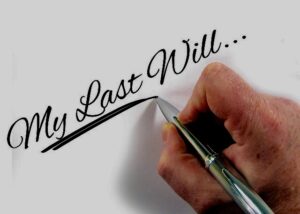
The Courts have generally in recent years allowed the introduction of hearsay evidence stating that it should be done so under a principled approach. It is a fact that most estate disputes when litigated often refer to statements from the grave and what was stated by the deceased prior to death and other types of hearsay that is not usually admissible into evidence.
Mac v Mak 2016 BCSC 1140 quoted the following excerpt of law that summarizes hearsay evidence in estate litigation:
Justice Dardi considered the principled approach to the hearsay exception in Harshenin v. Khadikin, 2015 BCSC 1213. Hearsay evidence is presumably inadmissible when relied upon for the truth of its contents. However, if the statement is not proffered for its truth or is proffered pursuant to a well-established exception, such as for the deceased person’s state of mind, it is admissible: Harshenin at para. 30, citing R. v. P(R.) (1990), 58 C.C.C. (3d) 334 (Ont. H.C.J.).
[32] However, the evidence must carry indicia of trustworthiness: R. v. Panghali, 2010 BCSC 1114 at para. 21.
[33] Justice Dardi noted in Harshenin that statements attributed to the deceased may require application of the “principled approach” to hearsay. She referenced the four decisions of the Supreme Court of Canada that should be followed regarding the principled approach, which are R. v. Khan, [1990] 2 S.C.R. 531; R. v. Smith, [1992] 2 S.C.R. 915; R. v. Starr, 2000 SCC 40; and R. v. Khelawon, 2006 SCC 57: Harshenin at paras. 32 – 33. The admissibility of hearsay under the principled approach is summarized in Khelawon at para. 2:
… When it is necessary to resort to evidence in this form, a hearsay statement may be admitted if, because of the way in which it came about, its contents are trustworthy, or if circumstances permit the ultimate trier of fact to sufficiently assess its worth. If the proponent of the evidence cannot meet the twin criteria of necessity and reliability, the general exclusionary rule prevails.
[34] The onus is on the party tendering the hearsay evidence to establish the necessity and reliability on a balance of probabilities. The court in this case must assess both the threshold reliability of the statement at issue and the statement’s ultimate reliability, having regard to the entirety of the evidence: Khelawon at paras. 2-3.
[35] Of the twin requirements, namely necessity and reliability, necessity will be met if the maker of the statement is deceased: Harshenin at para. 34.
[36] To establish reliability, the court must examine the circumstances surrounding the making of the statement. Justice Dardi described this inquiry as follows:
[35] … A circumstantial guarantee of trustworthiness is established if the statement was made in circumstances which “substantially negate” the possibility that the declarant was untruthful or mistaken: Smith at 933.
[36] As a preliminary threshold issue, the court must first find on a balance of probabilities that the statement was made by the Deceased before it goes on to determine the treatment and weight of such evidence: Creutz v. Estate of Kristian Winther, 2007 BCSC 1463 at para. 99. In essence, this assessment turns on the credibility of the various witnesses: Halfpenny v. Holien (1997), 37 B.C.L.R. (3d) 186 (S.C.).
Accordingly, in the case at bar, in addition to finding on a balance of probabilities that the statement was made, the Court must find the twin requirements of reliability and necessity have been met.
[37] Because Sau Har Mak is deceased, there is clearly the requirement of necessity. In respect of reliability, for the reasons that follow I find the evidence of Sau Har Mak’s meetings with her family, executing the mortgage documents, and arranging the Mahon properly to be held jointly with her daughters is reliable.
[38] When the reliability of evidence is in question, the court must look to documents that can either corroborate or refute evidence given by witnesses: Cerenzie v. Duff, 2014 BCSC 1345 at paras. 28 – 31; Gutierrez Estate v. Gutierrez, 2015 BCSC 185 at paras. 24, 51, 55, 87 to 88.




